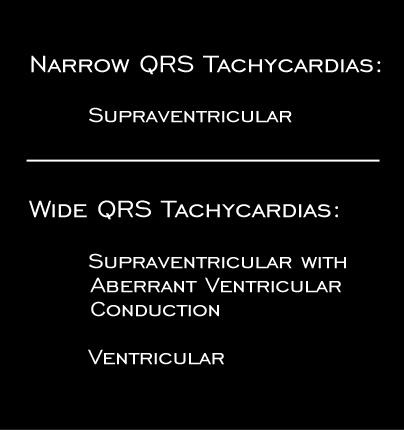
From an electrocardiographic standpoint, the tachyarrhythmias, and indeed, all disturbances in cardiac rhythm can be characterized as those having a narrow QRS complex and those with a wide QRS complex. A narrow QRS complex rhythm indicates that the impulse arises above the bifurcation of the common His bundle and is conducted normally through the ventricles. In almost all circumstances, a narrow QRS complex arrhythmia will be supraventricular in origin. A wide QRS complex rhythm indicates that the impulse is conducted abnormally through the ventricles. The impulse may still arise above the bifurcation of the common His bundle but be conducted abnormally, i.e.be supraventricular but conducted aberrantly, or it may arise in the ventricle
